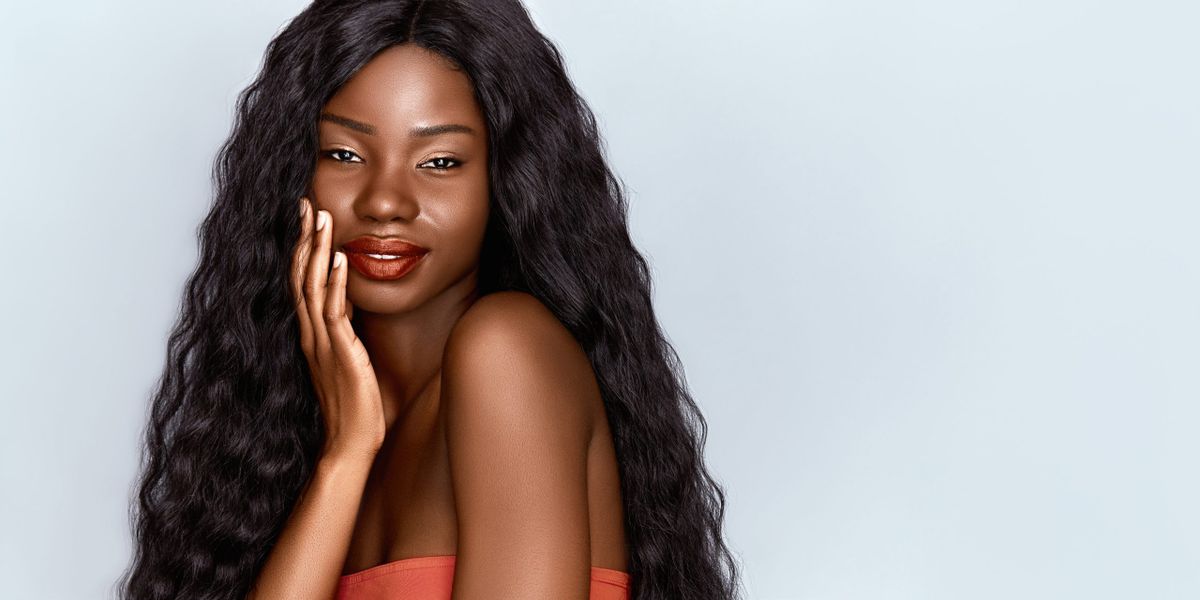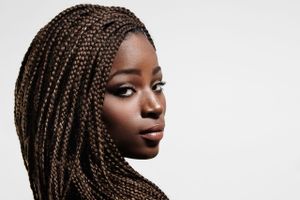If you have naturally coily or kinky hair—chances are you’ve probably had a breakdown during wash day which resulted in Googling treatments to keep your curls at bay and during your research, you may have come across something called texturizers. But do you know what texturizers actually do and how they work?
Read on to learn everything about texturizers, if they’re right for you, and more.
What is a texturizer?
While the word texturizer may sound like something that will actually add curls and texture to your hair, it’s actually quite the opposite! A texturizer is essentially a milder version of a chemical relaxer and it’s formulated to smooth hair and get rid of pesky frizz. Most people who use texturizers have tightly textured hair (4a-4c) and are looking to loosen their natural curl pattern or just make their coils easier to manage and style. Texturizers are a good option for people who want their hair to be more manageable but don’t want to lose their texture altogether. Texturizers are also helpful for people who heat style (straighten or heat curl) their hair often as well because it can cut down on time spent styling and heat being used.
Texturizers work by altering the proteins found in our hair strands. When texturizer is applied to the hair, it breaks down the hydrogen bonds found in the protein of our hair resulting in a looser curl pattern. While some texturizers claim that they’re “natural”, they’re almost always filled with chemicals. This is because to permanently alter the hair strand, there needs to be a chemical process.
Because texturizer is a chemical process, the results are permanent, so you need to be sure this is what you want before committing. To get rid of hair that’s been texturized, you’ll need to cut it off! With this in mind, if you want to keep up with texturizer treatments, you’ll have to redo it every 2-3 months as new hair grows in at the roots.
If you decide to opt for a texturizer treatment, make sure to go to a professional! While there are tons of texturizers that you can find at your local Target or drugstore, they can easily fry off your strands if you’re not careful. Go to a hairstylist that is versed in texturizer treatments instead so you can minimize the risk of any further damage.
What is the difference between texturizers and relaxers?
To make things simple—texturizers loosen your curl pattern for a smoother result while relaxers completely straighten the hair. The main difference between texturizers and relaxers aren’t the actual chemicals themselves, but rather the amount of time they’re left on the hair for. Texturizers are typically left on the hair strands for five to ten minutes while relaxers sit on the hair for about twenty minutes. Both treatments are permanent which means you won’t be able to go back to your natural curl pattern until the treated hair grows out or you cut it off.
Are texturizers bad for your hair?
There is a misconception out there that texturizers aren’t bad for your hair and won’t damage it as much as relaxers do. We’re here to tell you that unfortunately, that is not true. Whenever you are changing your natural texture with a chemical process, it leaves the hair shaft susceptible to dryness, breakage, and more. And while relaxers do technically sit on the hair longer which can cause more damage, texturizers are just as bad because it’s permanently altering the structure of the hair. People with color-treated or previously chemically altered hair will suffer more damage when using a texturizer because the hair is already in a weakened state.
After a texturizer treatment, many people deal with hair loss, breakage, dry scalp, and weakened hair strands. With all of this being said, if texturizers are done the right way, it is possible to see little damage so don’t let the risks scare you off completely! This is why it’s super important to go to a professional for a texturizer because they know what they are doing which will cut down on potential further damage.
How to take care of your hair after using a texturizer
If you bite the bullet and decide to go for a texturizer, here are some tips for taking care of your hair after the treatment.
- Before and after going to get your hair texturized, make sure you deep condition. Like a lot. Texturizers will dry out your strands because, well, it is a chemical process after all. Rotate between a moisture-rich mask like the DevaCurl Melt Into Moisture and a protein mask such as the Shea Moisture Manuka Honey & Yogurt Hydrate + Repair Protein-Strong Treatment. This will ensure that your strands are getting the moisture they’re craving as well as being strengthened with a protein treatment. You may also want to do an oil treatment on your scalp before and after the treatment as well to cut down on dryness and flaking.
- When detangling your hair, use a wide-tooth comb or your fingers instead of a brush, and always make sure to detangle gently without any rough pulling or tugging. As texturized hair is weaker than normal, excessive ripping at the hair while detangling can cause hair loss or breakage.
- If you decide to use heat styling tools, always use a heat protectant (the Cantu Thermal Shield Heat Protectant is great for curly hair) and heat style on the lowest temperature possible. Again, your hair is prone to damage because of the texturizer so tread lightly when applying heat!
- Sleep with a silk or satin pillowcase instead of a cotton one. Cotton pillowcases can pull and tug at the hair causing frizz and even breakage! You can also sleep in a silk or satin scarf/bonnet to really keep your hair intact and avoid frizz.
- Lastly, make sure to go to a professional for touch-ups. While you may think it will be easy to use an at-home texturizer just to touch up your roots, it can be a disaster if layered on top of previously texturized hair. Just to be safe, leave it to the pros!


